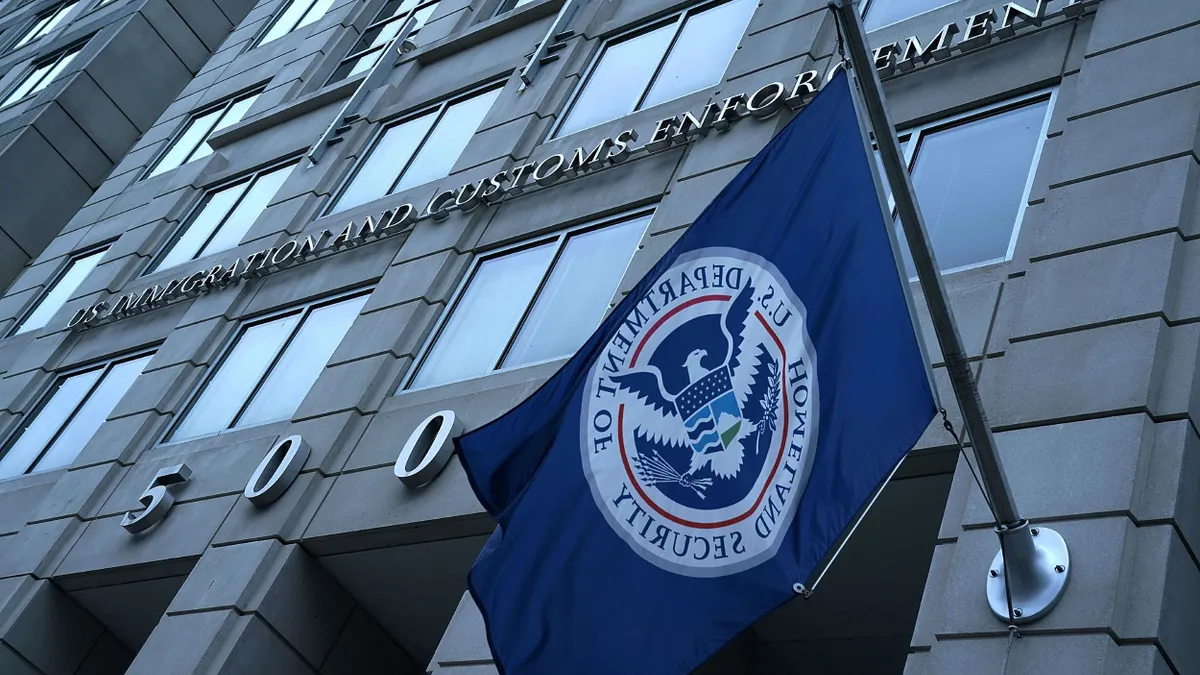Despite the U.S. Department of Homeland Security saying immigration enforcement in schools should be limited under its January policy change, immigration experts advise K-12 leaders to remain vigilant.
A DHS spokesperson recently clarified to K-12 Dive that immigration enforcement activity in schools should be “extremely rare” and would first require “secondary supervisor approval.” The DHS comment was in response to a lawsuit dismissed this month and filed originally in February by Denver Public Schools over DHS' policy memo that allows immigration enforcement actions in protected areas, like schools, hospitals and places of worship.
After DHS announced the initial change in January to move away from a Biden-era memo, DPS sued the Trump administration hoping to overturn the latest policy. The district's lawsuit said student attendance had “noticeably” dropped across all of its schools since the policy shift.
After the district agreed to dismiss the suit, DPS said in an emailed statement last week the mutual agreement was a “significant victory” for the district, given that DHS “admitted in federal court that the policy had not been changed in a meaningful way and that schools remained protected as sensitive locations.”
Has anything really changed?
The federal judge’s decision in the case “was not a victory in any sense” for DPS, said Richard Herman, an immigration lawyer and founder of the law firm Herman Legal Group. That’s because the judge ultimately denied DPS’ request for a temporary restraining order and an injunction, he added.
Regardless of what DPS or DHS has said about federal immigration enforcement policies in schools, Herman said, there is a “stark contrast” between the Biden-era memo issued in 2021, by former Secretary of Homeland Security Alejandro Mayorkas and a Jan. 31 memo from ICE Acting Director Caleb Vitello.
For instance, Mayorkas’ 2021 policy had a core principle that acknowledged the harmful ripple effect that immigration enforcement in protected areas would have on people’s access to public services, including schools, Herman said. That same memo also called for approval from DHS headquarters if agents with Immigration and Customs Enforcement were to enter a protected area.
Meanwhile, the Vitello memo doesn’t refer to any approval needed from DHS headquarters, and instead only requires approval from assistant field office directors and assistant special agents in charge, which Herman said are “fairly low level supervisors.”
“These supervisors are not given any guidelines now,” said Herman, adding that’s because Mayorkas’ guidelines and fundamental principles are now all “out the window” in the Vitello memo.
Whether district leaders should trust DHS’ word on federal immigration enforcement in schools being extremely rare “is the million dollar question,” Herman said. “The general idea is you can’t trust these folks.” He added that “the 2025 memo was intended to create fear” in the immigrant community.
‘Be prepared’
There’s still plenty of time for the Trump administration to enforce immigration policies in schools, said Alejandra Vázquez Baur, co-founder and director of the National Newcomer Network, a coalition of educators, researchers and advocates looking to address inequities at schools for newcomer students. The coalition defines newcomers to include those who are recent immigrants, refugees, asylees, unaccompanied minors, undocumented students and migratory children.
For months, districts have been preparing their staff and families for potential ICE raids through training and guidance. Vázquez Baur recommends districts continue those efforts.
School leaders “cannot control what’s happening outside of the school. They cannot protect students and families in places outside of school grounds,” said Vázquez Baur, but they can control school property.
School districts should also consider filing lawsuits or reaching out to their congressional representatives over this issue, Herman said. But beyond that, he advised school leaders to hold public sessions for their families, including information on their rights and safety plans in case a parent is arrested and there is no one to pick up their child from school.
Herman said principals and teachers being trained by their districts should also understand that ICE officials cannot enter school property without a warrant signed by a judge. If ICE attempts to enter a school, there should also already be an established school or district-based point of contact who is trained on this issue.
While Vázquez Baur said she hopes that DHS will follow their word that immigration activity in schools will be rare, she doubts the agency. “Districts need to be prepared,” she said.







 Dive Awards
Dive Awards














